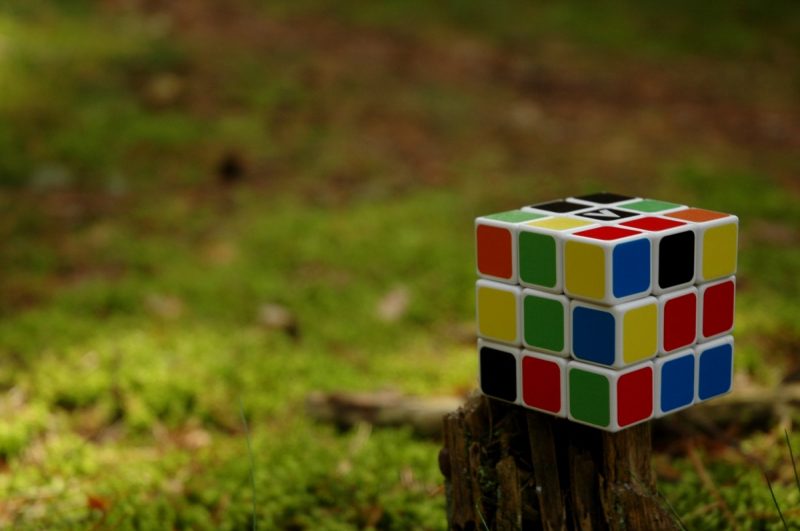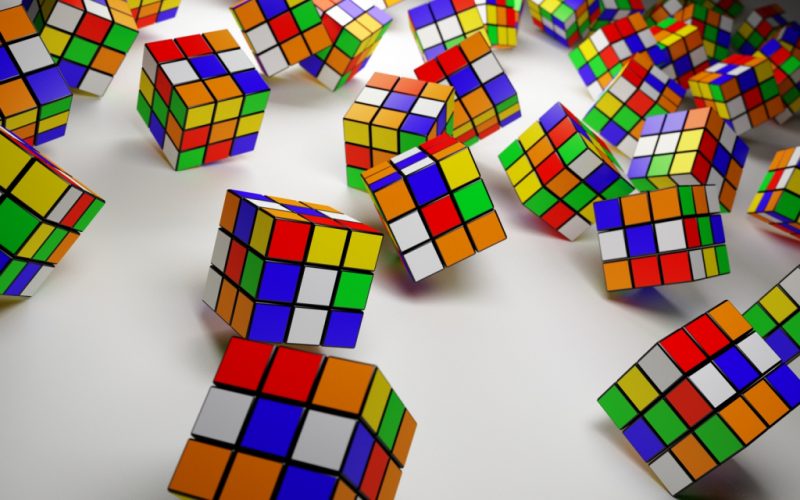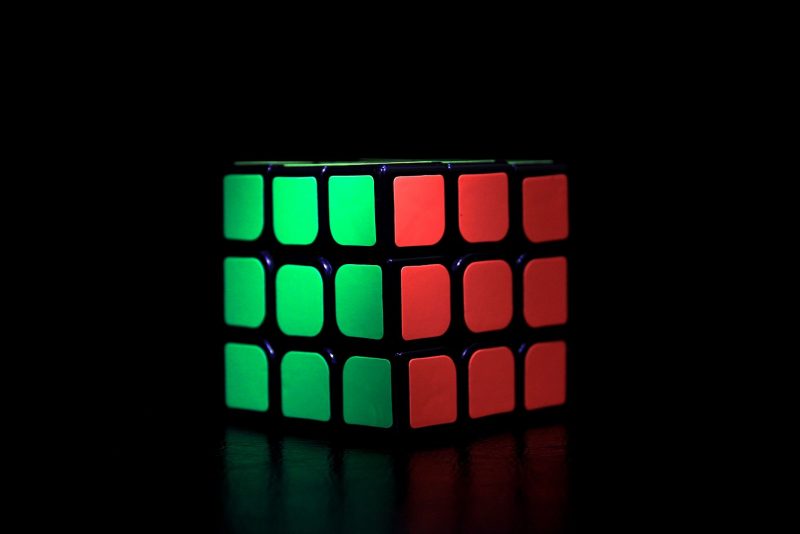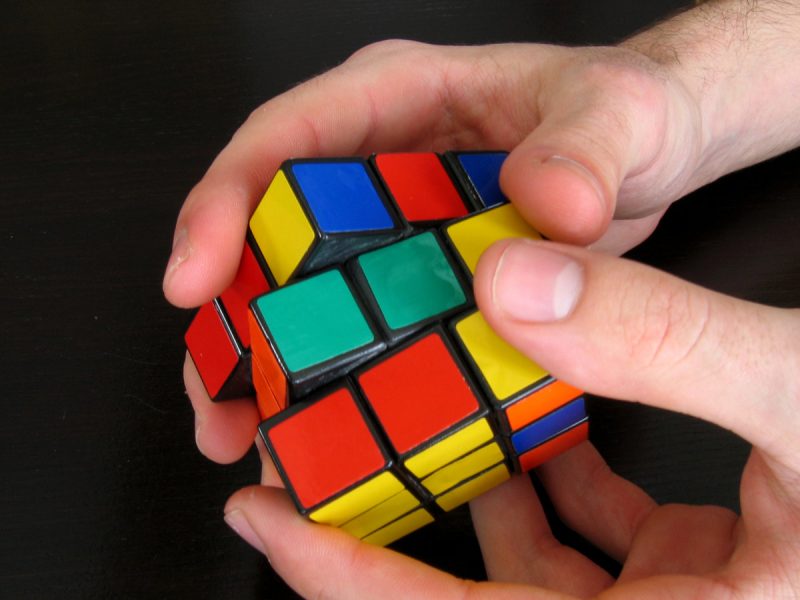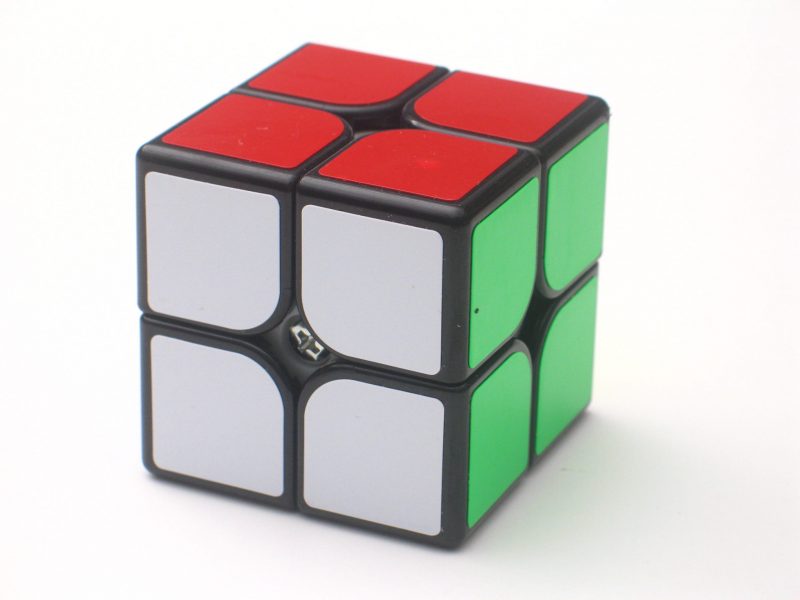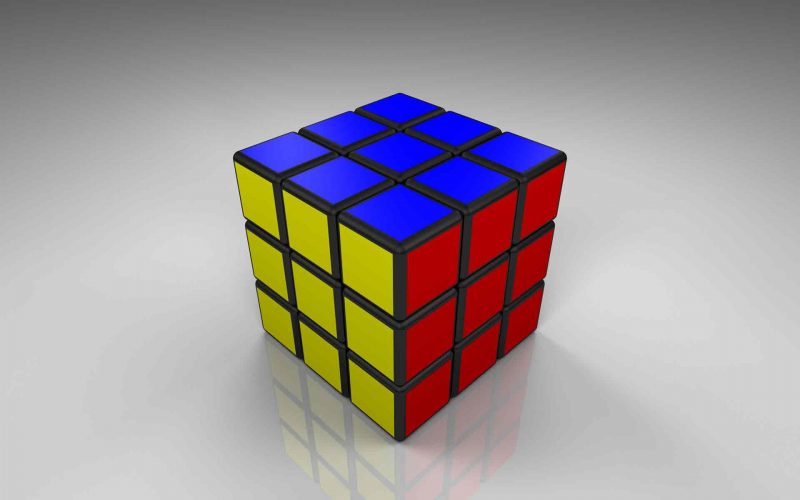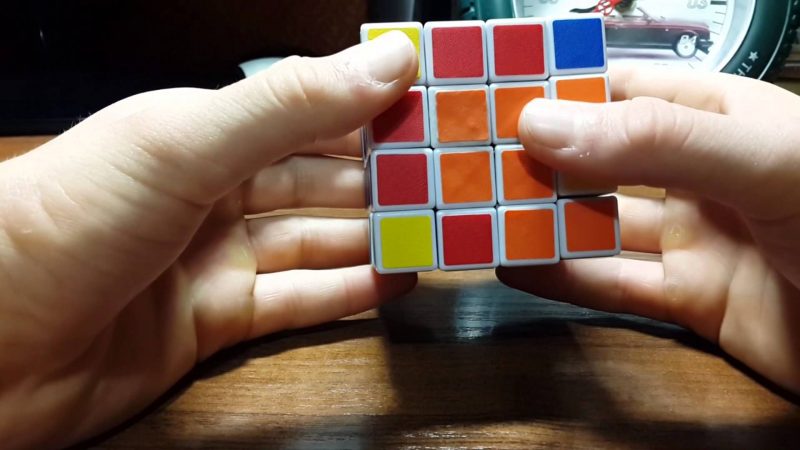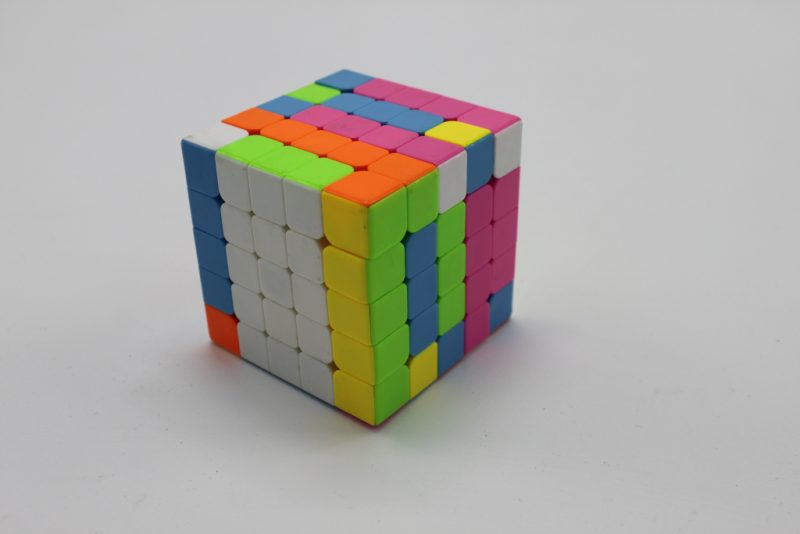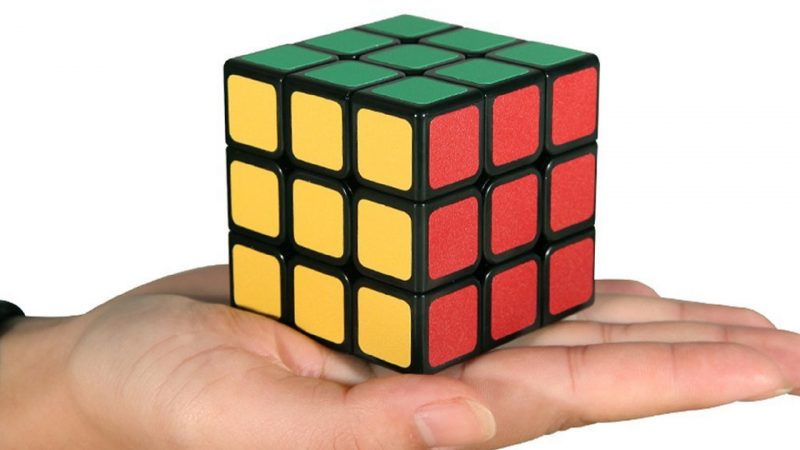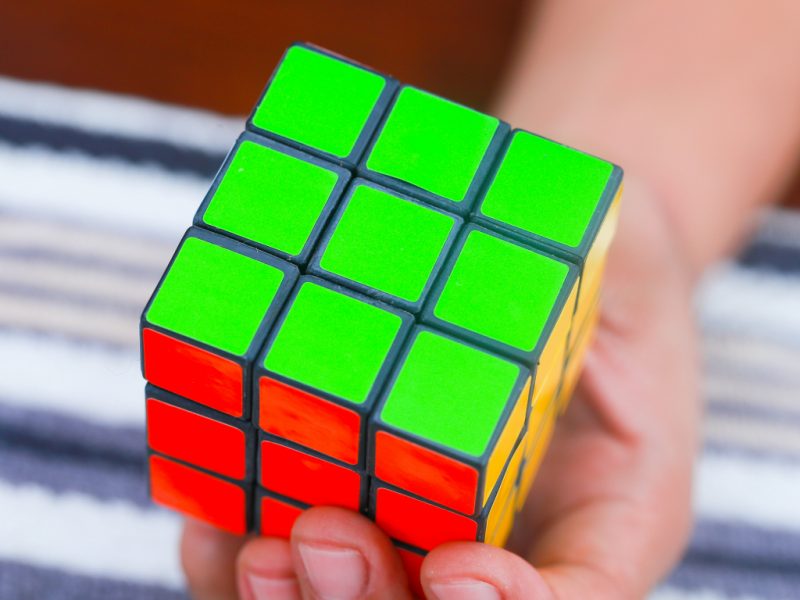Erne Rubik, a sculptor and architect from Hungary, decided to invent a visual aid that would help his students better understand the mathematical theory of groups, but the magic cube was so liked by scholars of different ages that the puzzle quickly spread around the world, making its inventor a millionaire. The assembly diagram of the Rubik's Cube at first glance seems incredibly complex, but if you carefully study the developed algorithms and delve into the assembly principle, then solving the puzzle will become a competition for speed.
Material Content:
- 1 The structure of the Rubik's Cube and the names of the rotations
- 2 Secrets of building a Rubik's Cube: elements, parts, key concepts
- 3 Schemes and stages of assembling the Rubik's Cube for beginners
- 4 The fastest way. Jessica Friedrich Method
- 5 How to collect a Rubik's Cube with closed eyes
- 6 Who owns the fastest build record
The structure of the Rubik's Cube and the names of the rotations
Without basic knowledge about the structure of the Rubik's Cube, it will be very difficult to restore the original form of this puzzle, without even stuttering to compete in the speed of its assembly.
The more common 3x3 cube consists of 26 elements, which in turn are divided into:
- central, immovable elements that have only one color and do not change their position in relation to each other, there are only 6 of them;
- costal (there are 12 of them). They are two-tone and always remain on the sidewalls, no matter what rotations have been done;
- angular (8 elements), which always remain in the corners of the cube and are painted in 3 different colors.
There is another element in the structure of the Rubik's Cube, hidden from our eyes - this is a cross to which the central elements are attached.
Depending on the capacity of the cube of certain elements, there may be a different amount, or they will be completely absent.For example, in a 2x2 puzzle there are only corner cubes and there are only eight of them.
Six faces of the cube are painted in various colors. It is noteworthy that only certain colors are used and on the cross of a regular Rubik's cube they are arranged in pairs against each other: white - yellow, red - orange, green - blue.
In order for the algorithms for solving the spatial problem written down by formulas to become clear, you need to learn the generally accepted international designation of faces and their rotations.
If you take the cube in your hands, then the face that will face the erudite is called the front and is denoted by the Latin letter F, the opposite side is the back (B), and the left (L), right (R), upper (U) and lower sides are also highlighted (D) facets.
To indicate the rotation of a particular face by 90 ° in the formulas for assembling the Rubik's cube, indicate the Latin letter denoting. When double-turning, the number 2 is nearby. If the rotation is counterclockwise, an apostrophe is added to the letter. So R ¢ means that the right side must be rotated once by 90 ° in the direction opposite to the clockwise movement.
Secrets of building a Rubik's Cube: elements, parts, key concepts
Erne Rubik over the assembly of the puzzle he invented has been piling up for a month. Now, for those who decide to conquer the magic cube, many methods have been developed.
The most popular of them:
- For beginners - a detailed guide that breaks down the algorithm for solving the problem into seven stages.
- The Jessica Friedrich method is the most popular method among fans of high-speed assembly, although in many ways it echoes the algorithm for beginners.
- The intuitive method of Valery Morozov. It completely lacks any formulas; its essence is not to give a ready-made solution, but to help understand the structure of the cube in order to independently arrive at a solution to the puzzle.
To learn how to assemble a Rubik's Cube, it is often advised to first disassemble the puzzle into separate elements, and then reassemble. This will help to better understand its structure and quickly adopt decision algorithms.
Before embarking on the development of a particular cube assembly technique, you should familiarize yourself with some concepts that are often found in algorithms.
A regular cross is a cross in which the edge faces coincide with the colors of the central elements on the sides, while forming on the upper face of the color corresponding to the central element.
An irregular cross differs from a correct one in that the cubes that form a cross on the top face do not coincide with the edge faces of the elements with the color of the sides.
Correct pairs are pairs of edge elements with matching colors on the corresponding faces that can be set simultaneously in the first and second layer of the puzzle.
Schemes and stages of assembling the Rubik's Cube for beginners
At this time, there are several options for a mechanical puzzle that appeared in 1974. These are cubes with a different number of elements that make up the face, as well as similar puzzles: Meffert's pyramid and a snake, consisting of segments - regular triangles. Consider the sequence and assembly steps of various cubic variations.
How to collect a Rubik's Cube 2x2
The Rubik puzzle with a capacity of 2x2 is also called a Mini-cube. Although this puzzle appeared a little later, it became not a complicated, but a lightweight version of the classic cube. A beginner scholar will be able to master its assembly in just 20-30 minutes.
The puzzle solution includes only three stages:
- Assembling the first layer - you need to combine the elements of the cube so that on the lower layer they are all the same color, and their side faces match the colors in pairs.
- The arrangement of the elements of the upper layer. At this stage, you need to determine the color of the bottom layer. He is not the only one present in the lower layer. Then place the cubes of the upper row in those corners that will correspond to the colors on the edges of the element, but it is not necessary that the color is in its place.
- Rotation of the elements of the upper layer - it is necessary to rotate the corner cubes clockwise or counterclockwise so that they become in the correct positions, and the Rubik's cube will be assembled.
To arrange the cubes of the lower and upper layers correctly, the following formulas are used:
- interchanging diagonal elements - WWFWP’V’F ’;
- rearranging neighboring elements - FVF’V’L’V’L.
To move the faces of an element:
- clockwise - FN²F’P’N²P;
- counterclockwise - P’N²PFN²F ’.
3x3 puzzle
To collect a Rubik's Cube 3x3 you need to go through seven stages:
- Collect the correct cross in the first layer. The cross of the elements, what color to collect does not make any difference, but many prefer to start with a white color.
- Arrange the corners of the first layer, and the first row of cubes is assembled.
- Place the ribs of the middle row in their places, after this stage two layers will be collected.
- Assembling the correct cross on the bottom layer.
- Placement of corner elements in their places, while the colors of their faces should correspond to the occupied corner, but not necessarily be in place.
- The final stage consists in turning the corner elements into the correct positions.
When starting to assemble the puzzle, it is important not to rotate the cube in your hands, so as not to get lost in the arrangement of the faces, which one is top, right, back, left or front.
Rubik's Cube 4x4
The solution to this puzzle variant, in spite of its large capacity, can be carried out in fewer steps:
- Assembly of centers - you need to place four elements of the same color in the center of each face. Here it is worth paying attention that the centers of this cube are not fixed, that is, you can independently choose which color will be opposite to which.
- Assembly of ribs. At this stage, you need to pair the edge faces in their places. If everything is done correctly, then after that we get a cube in which only the corner elements will be out of place.
- Corner alignment and parity. Using formulas for the Rubik's Cube 3x3 and rotating only the outer edges, you can completely assemble the puzzle. True, at this stage not everything can be so smooth, parities may appear - situations that are impossible in a 3x3 cube. It may happen that after their solution the harmony of the upper layer is a little destroyed, there is nothing to worry about, the algorithms for the classic version of the puzzle will help to arrange them in the necessary order.
5x5 quick puzzle assembly
The large capacity of the puzzle does not significantly affect the algorithm for solving it, the steps will be the same:
- First, we collect the centers of nine central cubes of the same color on each face. To carry out this stage, it is not at all necessary to memorize formulas; understanding the process will greatly simplify the task, turning it into ordinary spots.
- We collect and arrange in their places the triples of the rib faces. Solving this problem, it is not necessary to rotate the central layers, all manipulations should occur only with the external ones.
- If it turned out that all the edges were collected, except for two, which cannot be substituted, then this situation is called parity. Only after its solution can we proceed to the final stage of assembly.
The fastest way. Jessica Friedrich Method
This method of high-speed assembly is most often used by speedcubers, but it is not recommended for beginners who are better off learning the step-by-step algorithm first to understand the principle of the puzzle.
To master the Jessica Friedrich method, you will have to remember as many as 119 (!) Algorithms that will be used in the following steps:
- Arrangement of elements in the correct cross on the initial side, on average, this problem can be solved in seven moves.
- Restoring the location of the elements of the first and second layer by arranging four pairs of side-angle. To put each pair on the corresponding side, you also need to make seven moves on average.
- Orientation of the remaining unassembled layer when both edges and corners are turned so that they look up with the color of the last face. To solve this problem, you need to master fifty-seven permutations.
- Moving elements in the last layer, for which you have to master another 21 algorithms. According to average estimates, the Jessica Friedrich method makes it possible to solve the 3x3 puzzle in 56 moves.
How to collect a Rubik's Cube with closed eyes
If your skills are enough for stable results by solving the Rubik's cube with open eyes in one minute, you can master a new step - blind assembly. Here, it is not the solution of the puzzle as such that comes to the fore, but the remembering of the arrangement of rearranged elements on the faces.
So, in speedcubing competitions, blind assembly time includes not only the time for direct manipulation of the cube, but also the time to examine it.
Speedcubers often use the Roman Room method, which is also called the Palace or Cicero's Road, to remember. The essence of the method is that a room or a well-known route is recreated in the imagination, and concepts (in our case, the location of puzzle elements) are tied to objects in the room or along the road. Then, while solving the puzzle, it remains only to walk along the familiar road (or room) and put the elements in their places.
You should not be upset if the first time you fail to collect the Rubik's cube blindfolded, because even with the use of the sense of touch, practically no one succeeds in solving this problem without training the first time.
Who owns the fastest build record
To quickly assemble a Rubik's cube, you need not only to masterfully master the algorithms for moving puzzle pieces to the desired positions. This also requires masterly dexterity and speed of hands.
For those who set out to assemble this puzzle for the first time, it may take several hours to a couple of days to solve it, but Australian Felix Zemdegs in 2016 solved this spatial problem in only 4.73 seconds. This result seems impressive, only it is not the limit of the speed of the human brain and hands, since already in 2017 a new achievement of the American fifteen-year-old teenager Patrick Pons was recorded. Only 4.69 seconds were enough for him.
Now the time has come to take a breath and find out what and who owns the record for high-speed assembly of the Rubik's Cube. The same Felix Zemdegs in 2018 broke not only his record, but also the American young scholar, having completed the puzzle in 4.22 seconds.



